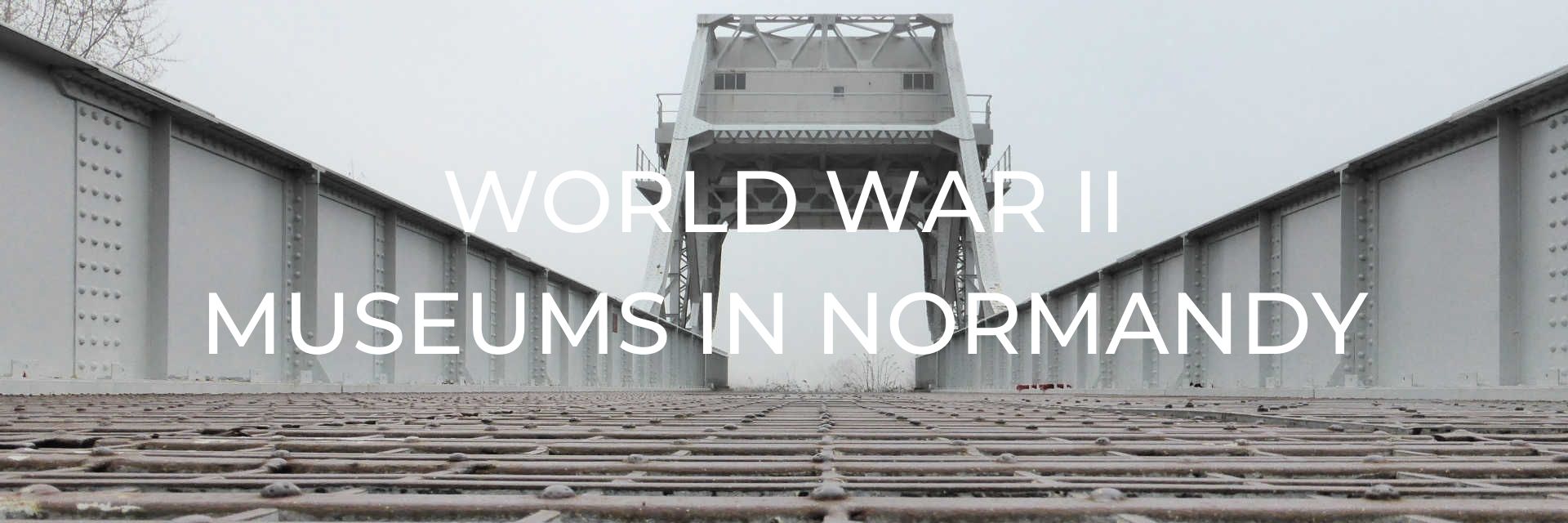
The French region of Normandy has many museums that offer visitors a way to learn about the events of D-Day and beyond. From large generic museums, country or area specific museums to museums which deal with a single event or battle, there is no better way to get an understanding of the other World War II and D-Day sights you can visit in the area.
We’ve selected some of our and our fellow travel bloggers favourite museums that provide a great insight into the events of the 6th June 1944 and beyond.
A map showing the location of each museum can be found at the end of the post.
Want to save this for later? Click the Pinterest button on the left for a pinnable image!
This post may contain affiliate links. Please read our full disclosure policy here.
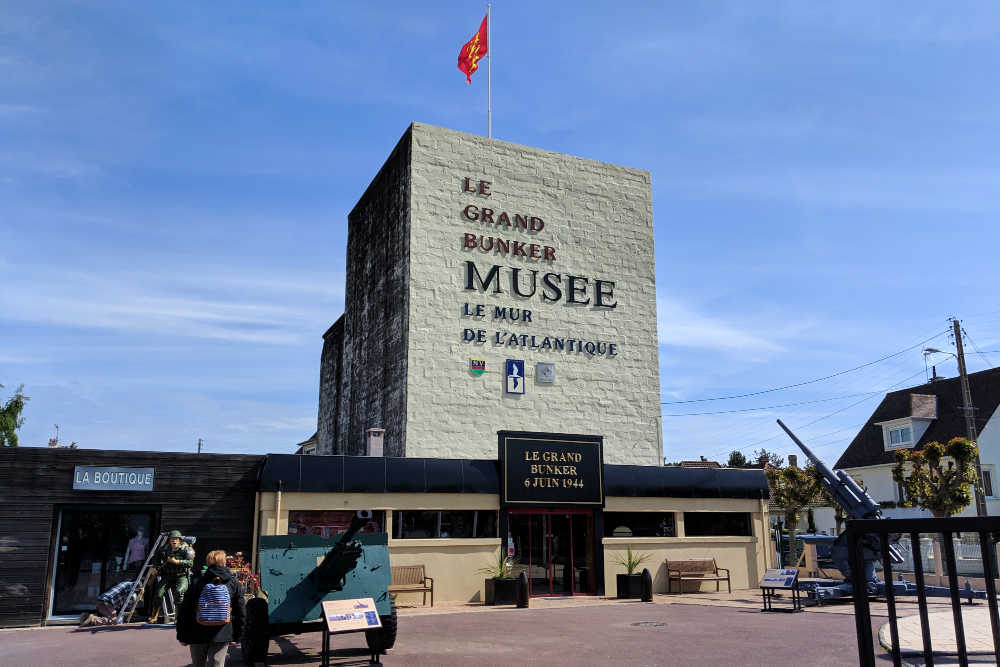
The Normandy D-Day landings of 6 June 1944 still evoke a huge interest from tourists and visitors to Northern France. The 75th Anniversary festival of 2019 was a huge success with a mass of visitors making the trip to museums, beaches and memorials. Le Grand Bunker (also known as the Museum of the Atlantic Wall), situated in Ouistreham, Normandy, is a unique museum that shows how the German defenders worked day-to-day on the North Atlantic Wall and effectively waited for the invasion.
This unique building was a very special construction in its time, having five floors and multiple functions. The installation was a fire watch, range finder and observation post. But it also housed a unit of troops, provided radio communications and was also a major command and control post.
The museum, open daily from 10 am-6 pm, itself has several zones. The ground floor within the perimeter wall displays a range of WWII vehicles, tanks and landing craft. The front entrance of the blockhouse itself houses the ticket office and a very good souvenir shop, where you can buy bullet keyrings and models and any number of military bits and bobs. The five floors of the bunker are fully restored. The first floor and entrance display some of the German weaponry and also has a mock-up of the scene when the bunker was finally captured during the D-Day operations. Further up into the bunker are displays of wartime items, the radio room, the barracks room, and mannikins (quite creepy actually!) set up to show how the bunker operated during WWII.
All in all, the Bunker is really hands-on and you actually climb on the roof if you feel energetic to look at the view the observers would have over the nearby Sword Beach. The Museum of the Atlantic Wall tries to preserve the memory of the seemingly impregnable defences the British and French commandos faced to fight their way up into the town. The museum makes you think about the raw conflict.
Recommended by Tracey of Pack the PJs
Reviews of Le Grand Bunker | Avenue du 6 Juin, Ouistreham
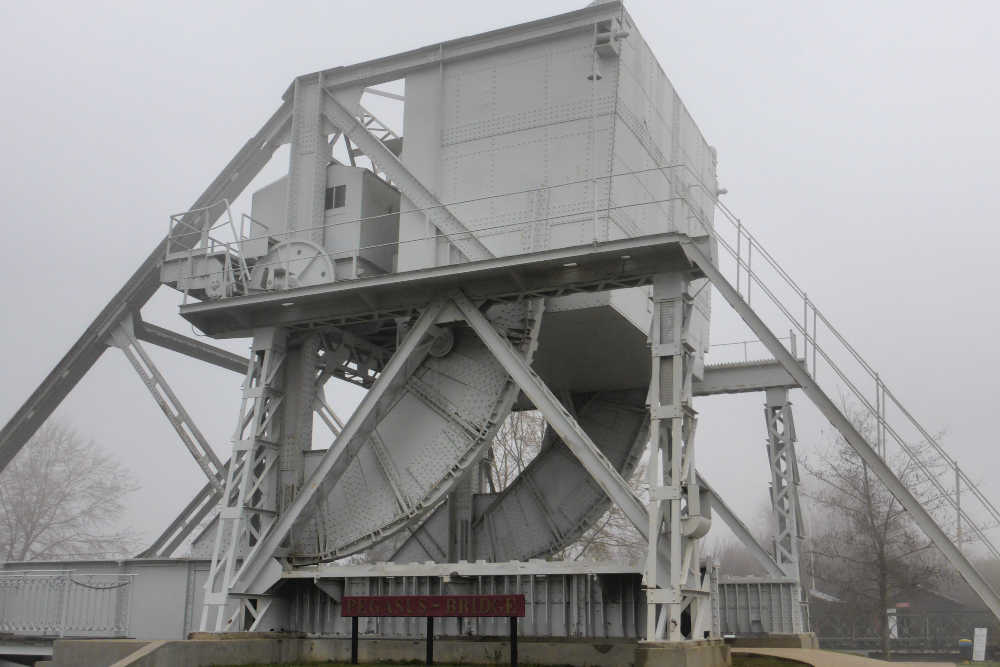
The museum at Memorial Pegasus is excellent and filled with memorabilia that relates specifically to Pegasus Bridge. In the centre there is a model of the area around the bridge which shows the path the gliders took. A short film, which is well worth watching, is played regularly that helps provide context for the events around Pegasus Bridge on D-Day. And the rest of the indoor museum is packed with photos, models, the original bridge sign, and lots of effects from people who liberated the bridge, together with the story of that night.
It was the 5th of June 1944 and the biggest invasion force ever assembled was poised across the South of Great Britain. Major John Howard of the 6th Airborne Division had been preparing his men for weeks for an audacious, but essential, assault to capture the bridges over the River Orne and River Dives. The plan was codenamed Operation Deadstick and if it failed, it would leave the Eastern flank of the invasion force vulnerable to counter-attack from Nazi reinforcements. At 22:56 they took off in six Horsa gliders which were to take them to France towed behind Halifax bombers. The gliders crossed the Normandy coast shortly after midnight and were released from the bombers. The three gliders heading to Pegasus Bridge (then known as Canal Bridge) landed ten minutes after release, the first crashing into barbed wire defences surrounding the bridge and the other two close behind. After a relatively short firefight, the defensive positions were over-run and the bridge was in Allied hands, securing the Eastern flank and protecting the invasion force across Normandy.
Leaving the indoor museum at the back, the area is completely dominated by the preserved bridge that was captured that night. It was replaced with a new bridge in 1994 and you can’t fail to be impressed that the original was moved to the memorial and kept for posterity. Unlike so many historical sites, you are allowed to walk on the original bridge from the right-hand side and stepping foot on the such an important piece of history bridge is enough to give you goosebumps. You are walking on the ACTUAL bridge that was captured so essentially on D-Day, so many decades ago.
Further back there is a full-size replica of a Horsa glider that was used in the raid as well as what remains of the fuselage of an actual glider. It is in quite a poor condition, but they are preserving it as best they can. There is also an explanation of Bailey Bridges, these were used to span rivers, which Allied bombing had destroyed, to allow for our reinforcements to cross after they had destroyed the bridge to stop Nazi reinforcements! These bridges were so modular and quick to assemble, they could create spans across rivers in just a few hours which could support the weight of tanks. Bailey Bridges are still used today, so successful is the design.

Within the grounds, there are several artillery pieces and a couple of tanks as well as memorials to the men who took part in the raid. One of the most poignant was a memorial to Lieutenant H.D. Brotheridge, the first, but sadly far from the last, Allied casualty to die in action on D-Day. He was leading his platoon across the bridge when he was hit by machine-gun fire attacking the defensive positions. Like many of those who died capturing Pegasus Bridge, he is buried in Ranville War Cemetery, just a short distance up the road.
Outside the grounds of the museum, you can cross the road to see the markers that signify where each of the three gliders landed. To think that they were powerless and released ten minutes flying time from where they landed, that they ended up so close to the bridge was an incredible piece of airmanship from the flight crews.
Alongside the new Pegasus bridge, one of the defensive guns is still there, “protecting” the bridge. On the other side of the bridge is a building that proudly wears a plaque that it was the very first building to be liberated.
“This was the first house in France to be liberated during the last hour of 5th June 1944 by men of Oxfordshire and Buckinghamshire Light Infantry in the British 6th Airborne Division under the command of Major H.John Howard”
Reviews of Memorial Pegasus | Avenue Major John Howard, 14860 Ranville
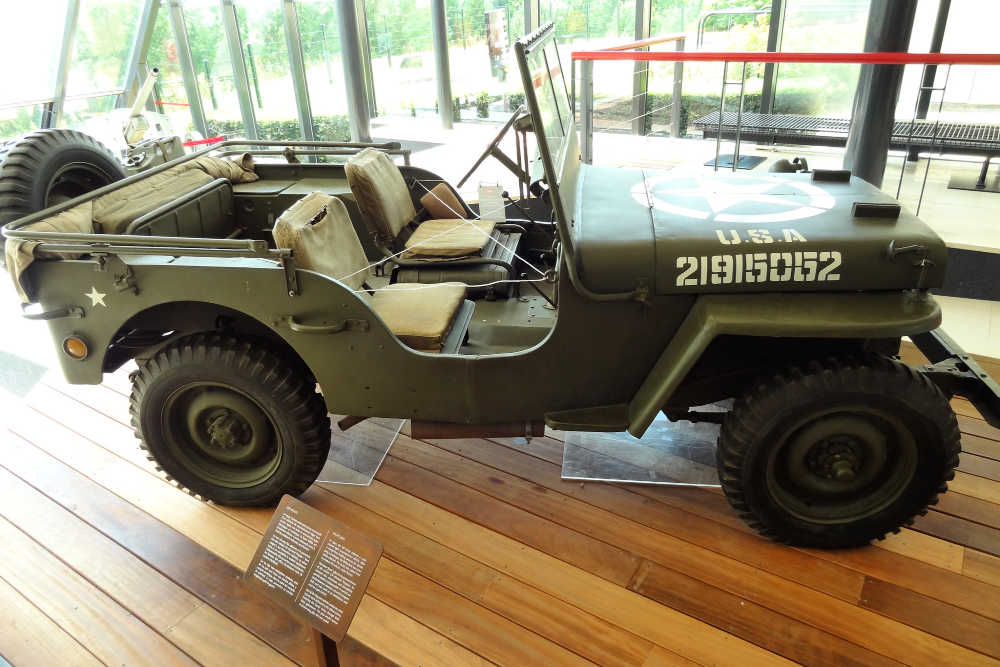
Photo by Iain Cameron | CC BY 2.0
Whereas many museums focus on the military aspects of the Normandy Landings, Memorial de Caen also covers the civilian cost. Such as that 20,000 inhabitants lost their lives in the battle of Normandy as the liberation of France began; a third of all French civilians killed during World War II. Another prime focus of the museum is to explore the events that led up to the second world war as well as the aftermath that led to the Cold War.
Having said that, Memorial de Caen also covers the Normandy Landings, D-Day and the events around and beyond the opening of the second front in Europe in depth. A nineteen-minute film using archive footage details the stages of the battle of Normandy from D-Day to the liberation of Le Havre, one hundred days after the landings. The capture of Cherbourg and the fierce fight to take the Cotentin peninsula ending in Operation Cobra. And of course, the liberation of Caen; the town was intended to be captured on the evening of D-Day, but the town didn’t completely fall until the 20th of July. The battle to take the city was so fierce that little of the pre-war city survived the aerial bombardment and assault of the ground forces.
In the grounds of the museum are three memorial gardens, the American, British and Canadian gardens are dedicated to the three main allied nations that were involved in liberating France. The museum itself is built on the site of a former blockhouse.
Reviews of Memorial de Caen | Esplanade General Eisenhower, 14050 Caen
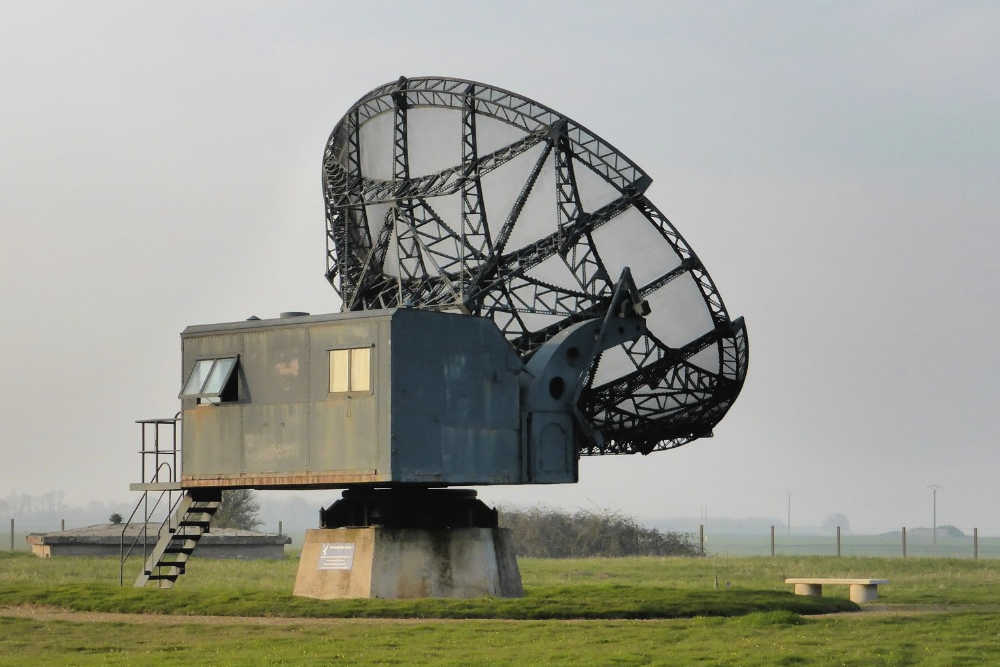
Douvres Radar Station was the primary radar station for the Luftwaffe in the area around where D-Day occurred. The station itself was disabled as D-Day began by the jamming of its radio signals by the Allies, the antennas were then destroyed by naval bombardment on the morning of the 6th June. Despite being isolated by the 3rd Canadian Infantry, the station held out from being captured for 12 days and was even resupplied as it awaited reinforcements. The station eventually surrendered to the British 41 Commando, Royal Marines on the 17th June.
The site is now a museum and visitors can explore two of the bunkers and learn about the development and role of radar during World War II and the life of the soldiers who manned the station during the war. Above ground, a preserved Würzburg radar is the prized exhibit; this giant, for its time, dish could track enemy aircraft up to 50 miles (80km) away. The one on display is not originally from this station as all the equipment on the site was destroyed during the D-Day Landings.
Reviews of Musee du Radar | Route Basly, 14440 Douvres-la-Délivrande
READ MORE: Check out other things to see and do in Normandy.
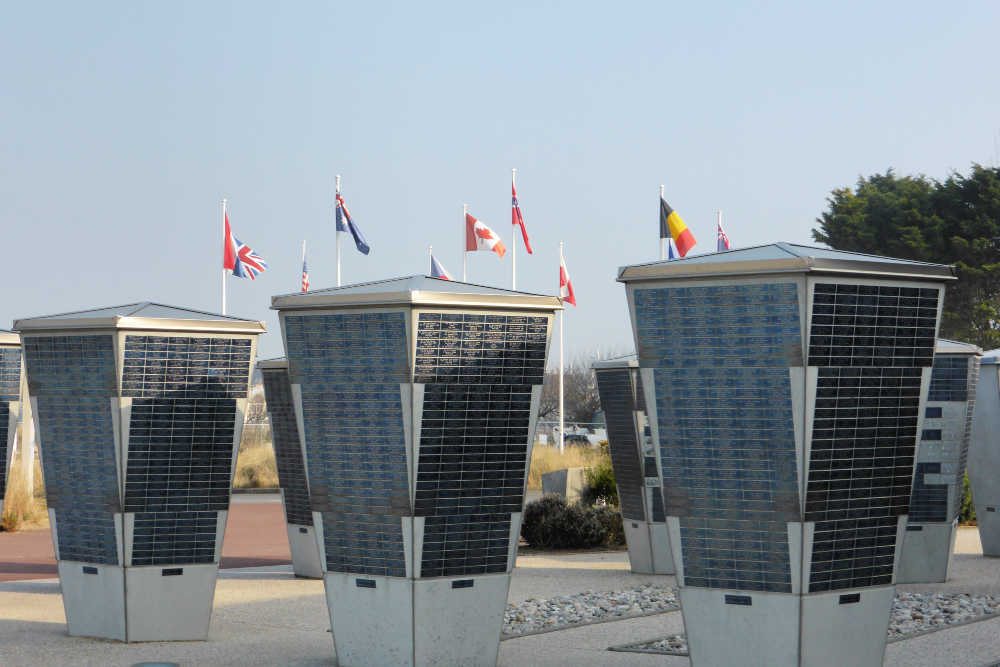
In September 1939, Canada declared the state of war and joined its allies by mobilizing the mightiest military force in its history at sea, on land, and in the air. The Juno Beach Centre tells the story life in Canada before, during and after the war as well as the Canadians who fought in the military. Opened in 2003 on the 59th anniversary of D-Day, the museums building has five points which represent a stylised maple leaf.
In the first room, you stand in a simulated landing craft to watch a film projected around you that shows images of the war, D-Day, as well as families back home describing what they were thinking and feeling at the time. The permanent exhibits then have lots of photographs and other artefacts to tell the story, including many personal documents like letters to home, even the letters sent home with the sad news that a loved one wouldn’t be returning.
Outside the museum, you can still see a bunker that formed part of the Atlantic wall and would have no doubt fired upon the 14,000 Canadian troops who landed on the Juno beach on D-Day.
Reviews of the Juno Beach Centre | Voie des Francais Libres, 14470 Courseulles-sur-Mer
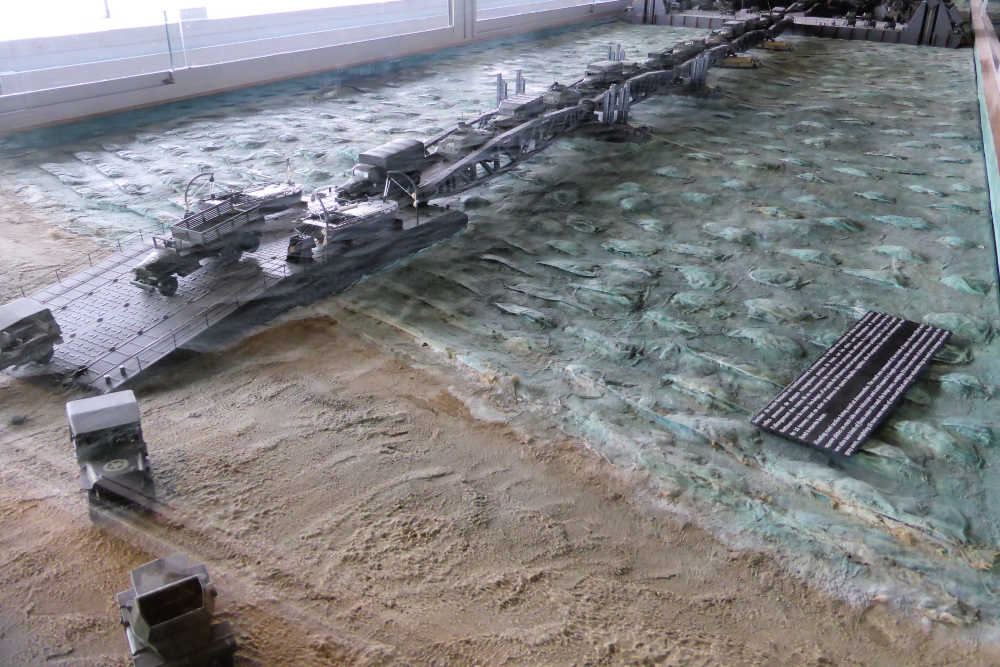
The Musée du Débarquement is worth visiting just for the amazing models of the artificial port that was constructed offshore of Gold beach. Originally there were to be two Mulberry harbours constructed, the other off of Omaha beach, unfortunately, a large storm damaged the Omaha beach harbour beyond repair. The Mulberry harbour off of Gold beach became known as Port Winston and was responsible for the landing of 2.5 million men, half a million vehicles and 4 million tonnes of other supplies.
Though planned for a lifespan of three months, the port was used for ten months after D-Day and large parts of the harbour are still visible on the beach and can be visited up close at low tide.
Reviews of the Musee du Debarquement | Place du 6 Juin, 14117 Arromanches-les-Bains,
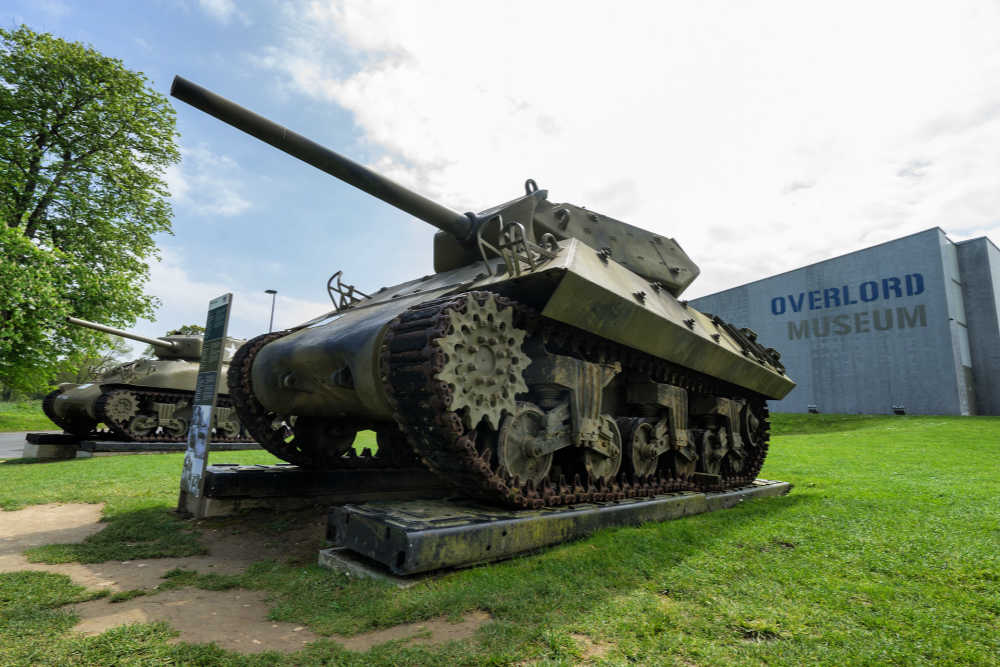
Opened on 5th June 2013 for the 69th anniversary of the D-Day landings the Overlord Museum is the youngest of the region’s commemorative museums. This youthfulness though does not reduce the emotional impact of the exhibits and stories retelling the horrors of this period.
Located at a roundabout on the D514 leading to the Normandy American Cemetery the Overlord Museum is just 3 km from Omaha Beach, one of the five landing areas for Allied forces. Famous tourist destinations of Bayeux and Mont St Michel are just 45 km and 120 km away respectively.
Chronicling the period of WWII from these Allied landings until the liberation of Paris in August 1944 the Overlord Museum’s impressive collection was assembled over a period of 50 years by local Michel Leloup.
Witnessing the conflict himself as a 15-year-old boy began a lifetime fascination and ultimately a collection of over 10,000 exhibits. Unfortunately, Michel died in 2011 just two years before the opening of the museum.
Whilst the imposing tanks sitting outside the Museum present a powerful start to your visit the highlight is a walk through the reproduced scenes, glass cabinets of smaller personal items and period documents. This will take on average one hour to tour as you read the accompanying multi-lingual explanations and historical facts.
The most memorable and powerful section of the Museum is though left to last. A white corridor leading from the main hall to the exit lined with colour photographs of returning veterans together with period photos and their own stories describing their experiences.
These dramatic, personal stories immediately bring home the horrors these undoubted heroes experienced in the name of peace. Like us, you will be sure to leave this incredible Museum with tears in your eyes.
Recommended by Paul of The Two That Do
Reviews of the Overlord Museum | Lotissement Omaha Center, 14710 Colleville-sur-Mer
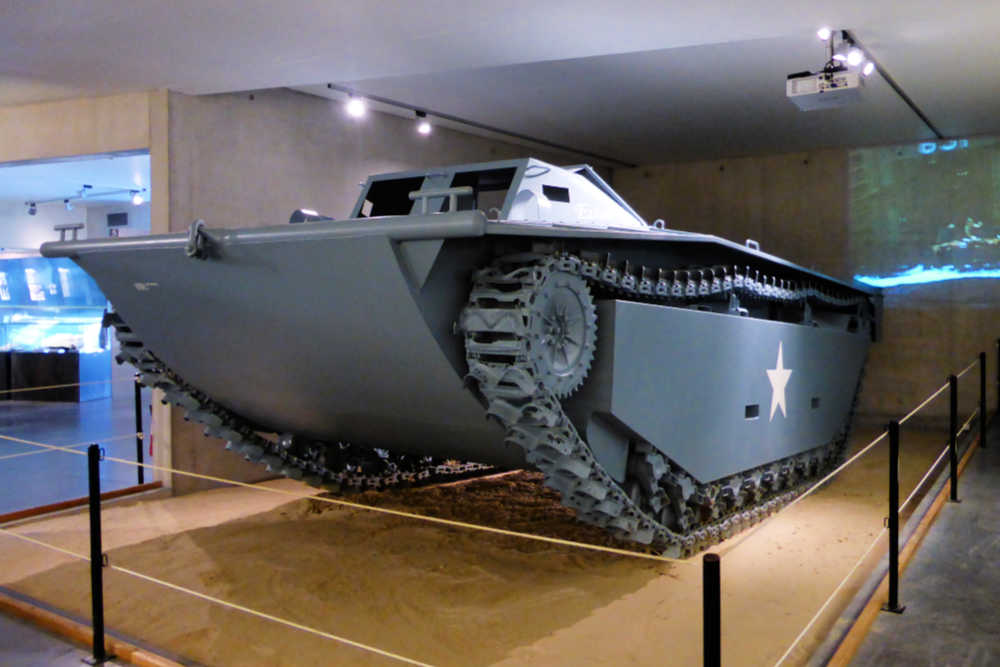
The museum stands on the actual site where the American troops landed and tells the story of the war through different sections set up in chronological order. Utah beach is visible from the museum, panoramically from the curved windows of the part of the museum that hosts a diorama showing a landing craft, some trenches and a field gun.
The story starts with the German defences and Rommel’s part in the building of the Atlantic Wall. It continues by telling visitors what life was like for the local people living under the German Occupation. And finally, visitors learn about D-Day through the preparation of the landings to the final outcome and success. There were lots of artefacts, photos, letters, and machinery on display including one of the last remaining B26 bombers. The bomber is painted in the colours of Major Dwight Dewhurstplane called the “Dinah Might“ who led the final bombing run over Utah Beach.
Outside the museum are several monuments including the Higgins Memorial which commemorate the inventor of the Landing Craft Vehicles that so many troops arrived on the beaches in. Other monuments pay homage to units which fought here such as the 1st Genie Special Brigade, the 4th and 90th American Infantry Divisions, the US Navy and the 101st Airborne.
Reviews of the Utah Beach Landing Museum | Plage de la Madeleine Utah Beach, 50480 Sainte-Marie-du-Mont
Want to save this for later? Click the Pinterest button on the left for a pinnable image!
RESOURCES | PLAN YOUR TRIP TO NORMANDY
To book flights, rental cars, accommodations, and activities for your trip, please check out our recommended travel providers, favourite apps and websites.
- Rick Steves’ ‘Normandy TV show‘ episode
These are a few tours we would recommend for your trip to Normandy.
Some of the links in the post above are affiliate links. This means if you click on the link and purchase the item, we will receive an affiliate commission but this does not affect the price to you. Please read our full disclosure policy here.
